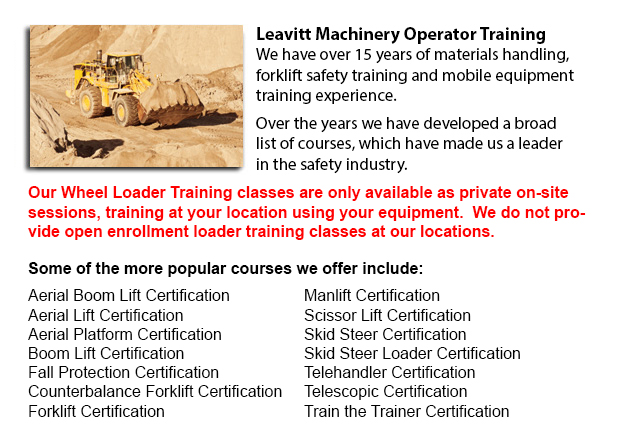
Forklifts are available in several load capacities and a variety of units. Most lift trucks in a typical warehouse surroundings have load capacities between 1-5 tons. Bigger scale models are utilized for heavier loads, like for example loading shipping containers, may have up to 50 tons lift capacity.
The operator can use a control to be able to raise and lower the blades, which are likewise called "tines or forks." The operator can also tilt the mast in order to compensate for a heavy load's propensity to tilt the forks downward to the ground. Tilt provides an ability to function on bumpy ground also. There are yearly contests for experienced lift truck operators to compete in timed challenges as well as obstacle courses at local forklift rodeo events.
General operations
Forklifts are safety rated for loads at a particular limit weight as well as a specified forward center of gravity. This essential info is provided by the maker and positioned on a nameplate. It is vital loads do not go beyond these details. It is illegal in numerous jurisdictions to tamper with or take out the nameplate without obtaining consent from the lift truck maker.
Most lift trucks have rear-wheel steering in order to improve maneuverability. This is very helpful within confined spaces and tight cornering areas. This type of steering differs quite a little from a driver's first experience along with different vehicles. As there is no caster action while steering, it is no required to use steering force in order to maintain a continuous rate of turn.
Instability is one more unique characteristic of lift truck operation. A continuously varying centre of gravity occurs with every movement of the load amid the forklift and the load and they have to be considered a unit during utilization. A forklift with a raised load has gravitational and centrifugal forces which can converge to cause a disastrous tipping mishap. So as to prevent this from happening, a forklift should never negotiate a turn at speed with its load raised.
Lift trucks are carefully made with a cargo limit intended for the forks. This limit is lowered with undercutting of the load, which means the load does not butt against the fork "L," and also lessens with blade elevation. Usually, a loading plate to consult for loading reference is situated on the forklift. It is unsafe to make use of a lift truck as a worker hoist without first fitting it with specific safety equipment such as a "cage" or "cherry picker."
Forklift use in distribution centers and warehouses
Forklifts are an essential component of warehouses and distribution centers. It is essential that the work situation they are positioned in is designed so as to accommodate their safe and efficient movement. With Drive-In/Drive-Thru Racking, a forklift must travel within a storage bay that is multiple pallet positions deep to set down or get a pallet. Operators are usually guided into the bay through rails on the floor and the pallet is located on cantilevered arms or rails. These confined manoeuvres need trained operators to be able to complete the task efficiently and safely. Since every pallet requires the truck to go in the storage structure, damage done here is more common than with other kinds of storage. When designing a drive-in system, considering the measurements of the blade truck, together with overall width and mast width, should be well thought out to be able to be sure all aspects of an effective and safe storage facility.
-
Forklift Training Course Kamloops
Forklift Training Course Kamloops - CSA and OSHA establish criteria for forklift safety training that meets current standards and regulations. Anybody planning to use a forklift is needed to successfully complete safety training prior to utilizing an... More -
Forklift Training Program Kamloops
Forklift Training Program Kamloops - The forklift is a common powered industrial vehicle which is in wide use these days. They are occasionally called lift trucks, jitneys or hi los. A departments store will use the forklift in order to unload and lo... More -
Aerial Lift Training Kamloops
Aerial Lift Training Kamloops - The mechanized access platform known as an aerial work platform is a machinery which provides access to places that are otherwise inaccessible to people and other machine. Likewise called an elevating work platform or... More -
Forklift Training School Kamloops
Forklift Training School Kamloops - Forklift Training School - CSA and OSHA establish criteria for forklift safety training which meets existing standards and regulations. Anybody planning to use a forklift is needed to successfully complete safety t... More -
Heavy Equipment Training Courses Kamloops
Heavy Equipment Training Courses Kamloops - When choosing a heavy equipment operator course, the initial step must be to determine the capacity in which you would be working with heavy machines. You could find the correct course to teach you how to o... More -
Heavy Equipment Training School Kamloops
Heavy Equipment Training School Kamloops - HEO or also known as the heavy equipment operator courses would provide you with the skills and knowledge required in order to enter the workforce as an entry level heavy machine operator. In this 12 week co... More -
Telehandler Operator Training Kamloops
Telehandler Operator Training Kamloops - Telescopic handler Forklifts or telehandler forklifts are common industrial equipment found in numerous construction industry environment. The telehandler is a helpful machinery and makes for a valuable tool w... More -
Telehandler License Kamloops
Telehandler License Kamloops - A telehandler or telescopic handler is a machine which is frequently utilized in agricultural and industrial applications. It has a similar appearance to a forklift and even works in a similar manner, though, the teleha... More

Forklift Training Kamloops
TOLL FREE: 1-888-254-6157
Kamloops, British Columbia
forklifttrainingkamloops.com
Email Us
About Us


